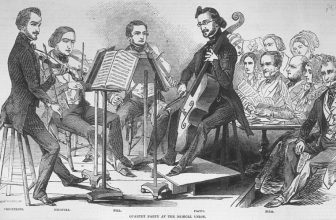What is a Hook in Music? (And How to Write One)

A hook in music is a catchy part of a song that grabs the listener’s attention and makes the tune memorable. Understanding and effectively writing hooks can greatly enhance a song’s appeal to its audience.
A musical hook, akin to the “hook” in a good book or movie that keeps you engaged, is an essential ingredient for a hit song. It’s often a rhythmic, melodic, or lyrical motif that sticks in a listener’s ears, a catchy and compelling musical phrase that listeners remember. Whether a few notes, a repeating rhythm pattern, or a catchy lyric, a well-crafted hook can transform a song from good to spectacular. Some famous examples include the opening guitar riff in “Smoke on the Water” by Deep Purple, or the repeated phrase “I want to hold your hand” in the Beatles hit.
When writing a hook, it’s important to keep it simple and make it unique and compelling enough for listeners to remember. This key musical nugget should resonate with your audience and provide something they can sing, hum or dance along to. A strong and captivating hook coupled with meaningful lyrics can often be the decisive factor distinguishing a memorable hit song from an average tune.
Contents
Musical Hook – At a Glance
- A hook in music is a catchy element that grabs the listener’s attention and makes the song memorable.
- Hooks can take various forms, such as rhythmic, lyrical, melodic, or instrumental.
- Hooks are crucial for making your songs unforgettable, generating curiosity in the audience, engaging the listeners emotionally, and increasing the marketability of your music.
- Writing an effective hook involves crafting a distinctive melody, using relatable lyrics, and strategically repeating the hook throughout the song.
- Choruses and hooks are not the same. Choruses are the main parts of the song repeated at least once, while hooks can fall to different parts of the song. Not all the hooks are choruses, but all choruses should be hooks to make the songs memorable and catchy.
- Many iconic songs feature instantly recognizable hooks, making them some of the most popular and long-lasting songs.
Definition and Importance of a Hook in Music
In essence, a hook in music is a brief, catchy segment of a song designed to grab your interest and make you remember the song. The hook often contains the song’s most memorable rhythmic, melodic, or lyrical elements. This could be a particularly catchy tune, repeated lyrics, or a compelling beat that you can’t shake out of your mind even after the song ends.
The importance of a hook in music cannot be overstated:
- Unforgettable: The hook is the part of the song that listeners remember and hum or sing along to. It gives the song its identity and makes it distinctively recognizable.
- Generates curiosity: A good hook captures listeners’ interest, compelling them to listen to the entire song and repeat it, increasing its popularity.
- Engagement: A well-crafted hook can hold the listeners’ attention, engaging them emotionally and making them more likely to enjoy and share the song with others.
- Marketability: From a commercial perspective, a strong hook can significantly increase a song’s marketability, boosting sales, streams, and views.
The Different Types of Hooks in Music
There are several types of hooks that can feature in a song, each playing a unique role in adding to the song’s overall appeal.
- Rhythmic Hook: This is a hook that relies heavily on a distinctive beat or rhythm pattern. Dance songs often employ rhythmic hooks to keep listeners grooving to the beat. Think of the distinctive recurring bassline in “Billie Jean” by Michael Jackson.
- Lyrical Hook: This hook centers around memorable, catchy lyrics, often repeated again and again throughout the song. Lyrics like “Don’t worry, be happy” from Bobby McFerrin’s famous song, for instance, stick with listeners long after the song ends.
- Melodic Hook: These hooks are appealing sequences of notes that are unique and easy to remember. They can often be found in the intro, outro, or in solo during the song. A great example is the opening line to “Somewhere Over the Rainbow.”
- Instrumental Hook: This includes any enticing part of the song created by non-vocal instruments. Iconic guitar riffs, like the opening riff of The Rolling Stones’ “I Can’t Get No Satisfaction” or Nirvana’s “Smells Like Teen Spirit,” can serve as instrumental hooks that fans instantly recognize.
Recognizing these different types of hooks will provide much-needed diversity and can keep your listeners engaged from start to finish.
Hook vs. Chorus
While both the hook and the chorus play crucial roles in music, it’s important to note that they’re not the same thing.
- The Hook: As we’ve already established, the hook is a catchy, memorable musical phrase that grabs your attention. It can appear anywhere in the song and is designed to be the specific part that sticks in your mind, making the song stand out. Hooks can be made up of lyrics, melody, rhythm, or instrumentation.
- The Chorus: On the other hand, the chorus is usually a song’s main section, typically repeating at least once both musically and lyrically. It’s usually the part of the song that encapsulates the main themes or ideas and is often designed to be easy to sing along to.
The hook and the chorus often work together to enhance a song’s appeal. In many instances, the hook is incorporated into the chorus. But they can also exist separately, with each adding a different layer to the song’s overall structure and making it more engaging and memorable for the listener.
The hook can be the main melody or another part of the song outside the chorus. In the example of “Smoke On The Water,” the hook is the main riff of the song, played in the intro and after the chorus.
So, the hooks are not always the choruses, but the choruses should always be hooks. That may sound complicated, but what I mean is that the chorus of a song should be catchy and memorable. But, the real hook can fall somewhere else, like another section or a melody.
A good catchy chorus with a good hook is Carly Rae Japsen’s 2012 song “Call Me Maybe.” Like it or not, the song succeeded in making everyone go around singing that chorus. It is simple, catchy, repetitive, and infectious.
How to Write a Memorable Hook
Writing a memorable hook is an art that can take your songwriting skills to the next level. Here are some key guidelines for crafting a captivating hook:
- Develop a Catchy Melody: A melody that’s simple yet distinctive can stick in listeners’ minds. Try to think of a unique sequence of notes that encapsulates the spirit of the song.
- Use Relatable Lyrics: If your hook includes a lyrical component, make the words meaningful and relatable. Lyrics that listeners can connect with emotionally can make the song more memorable.
- Repetition is Key: Repeating the hook throughout the track can help to cement it in the listeners’ minds. However, it’s also crucial to strike a balance so that the repetition doesn’t become monotonous or tiresome.
- Test the Hook: Once you’ve developed your hook, hum or sing it without the music. If it stands on its own and is easily memorable, you might just have written a killer hook!
Remember, writing an effective hook takes practice and experimentation. Keep refining your work until you find the perfect hook that gives your song its signature touch.
Examples of Effective Hooks in Famous Songs
Bringing our discussion of music hooks to life, let’s walk through a few examples from well-known songs that have effectively used hooks to capture our hearts:
- “Sweet Child O’ Mine” by Guns N’ Roses: Slash’s iconic opening riff is a perfect example of an instrumental hook that is instantly recognizable and sets the stage for the rest of the song.
- “We Will Rock You” by Queen: The iconic stomp-stomp-clap-pause groove at the start of the song is an example of a legendary rhythmic hook, which is simple yet incredibly catchy and memorable.
- “Let it Be” by The Beatles: The repeated phrase “Let it be” serves as both the song’s lyrical hook and its chorus, making it a classic that’s still widely loved and recognized today.
- “I Will Always Love You” by Whitney Houston: The stirring melody line in “And I will always love you” represents a melodic hook that grabs listeners every time they hear the song.
These examples all demonstrate how different types of hooks can be used effectively to make a song unforgettable, underscoring the critical role they play in successful songwriting.
Conclusion
To conclude, a hook in music is a catchy element that adds intrigue and allure to a song, making it uniquely attractive and memorable to listeners. Hooks can take many forms, such as rhythmic, lyrical, melodic, and instrumental, and understanding their importance and diverse types can add a compelling dynamic to your music.
While sharing similarities with choruses, hooks uniquely grab the listener’s attention and often occupy a firm place in their memory. Knowing how to create a catchy melody, use relatable lyrics, and effectively use repetition are vital skills in writing notable hooks.
By examining iconic songs with successful hooks, we see just how transformative this aspect of music can be. A well-crafted hook not only distinguishes a song from others but can also be the defining factor that shapes its popularity and longevity in the hearts and minds of listeners.





